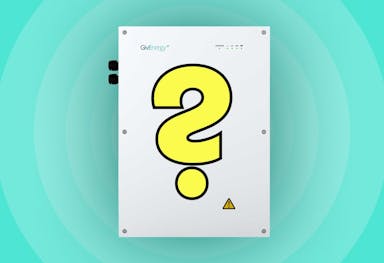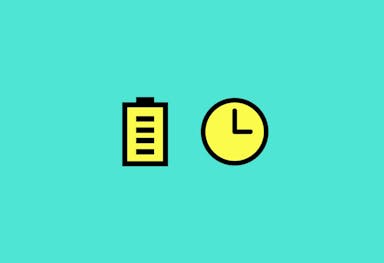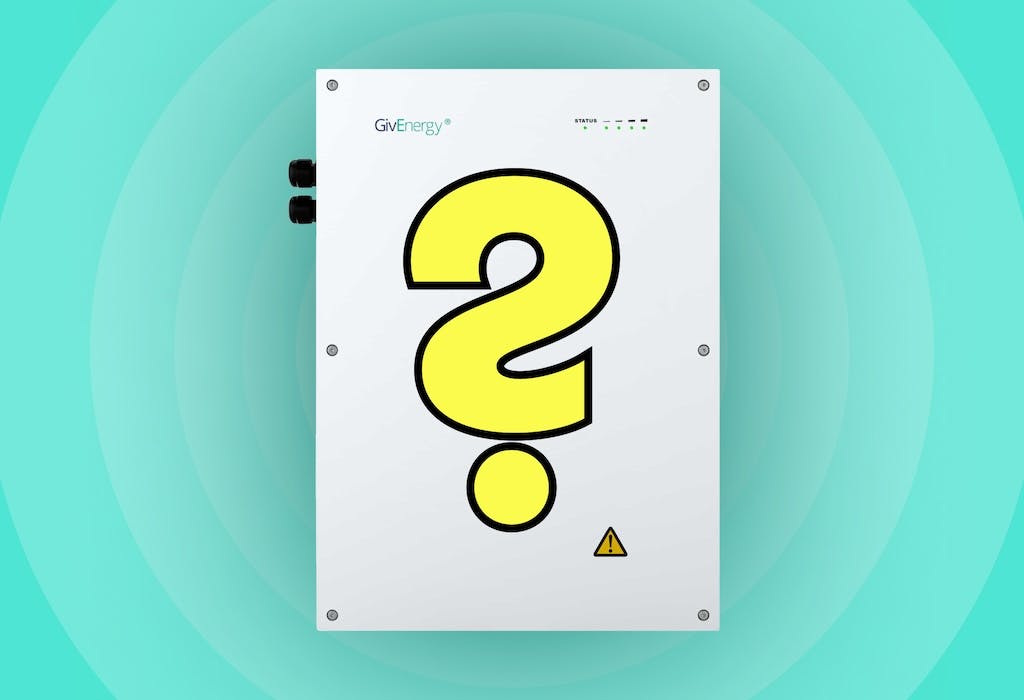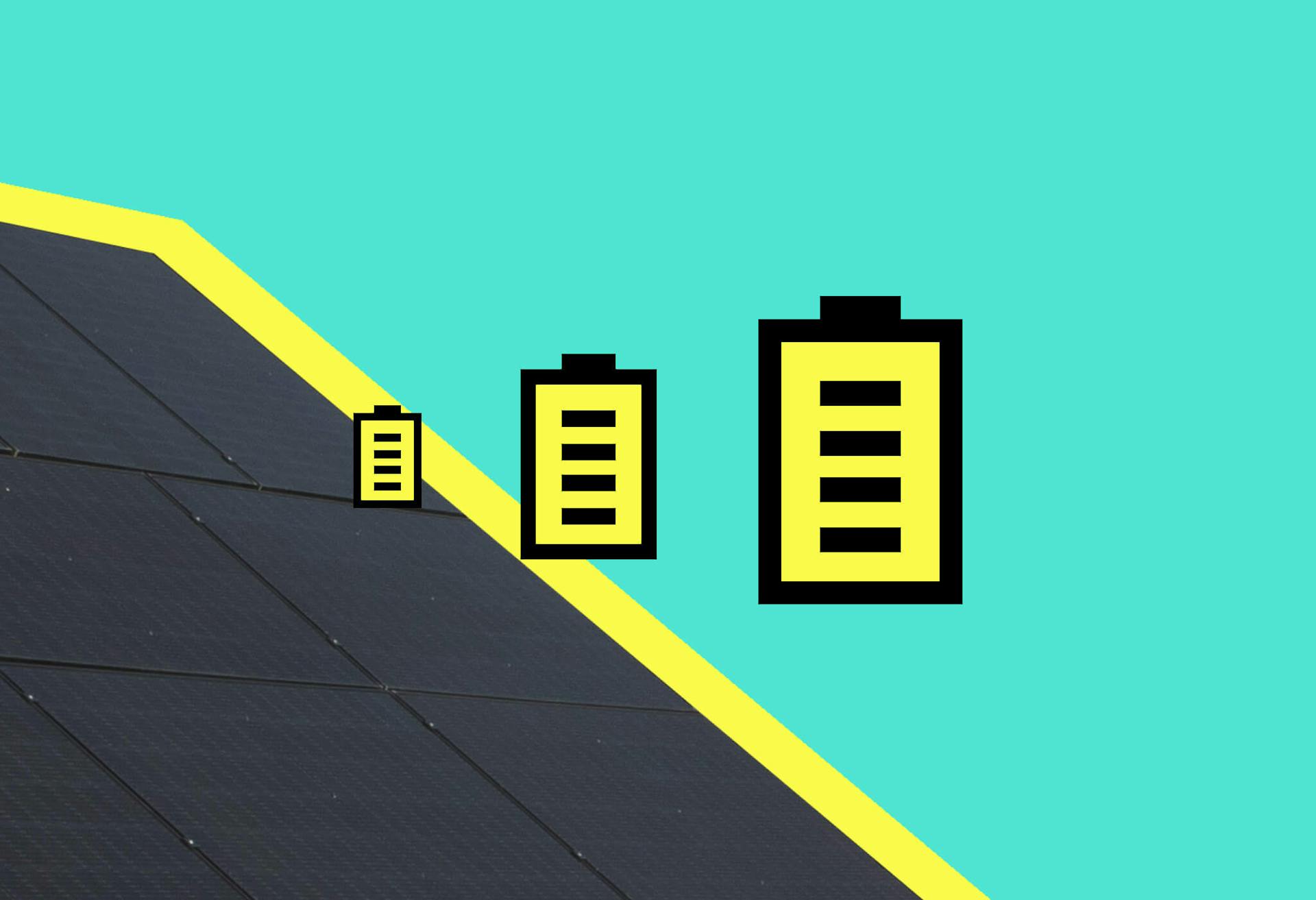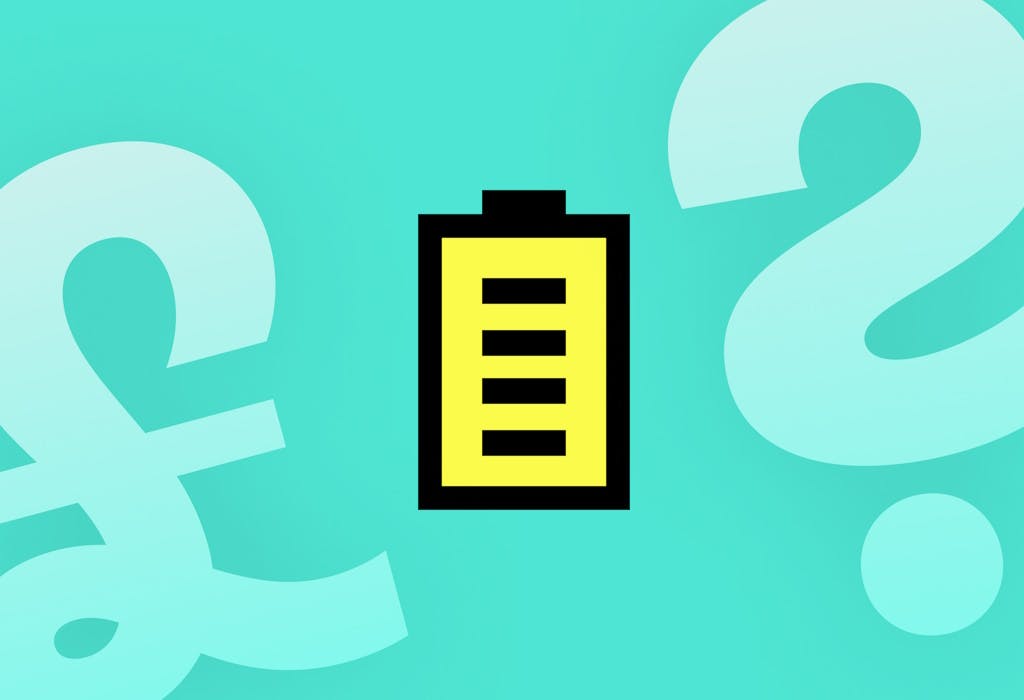- Solar advice hub
- Batteries
- Is the Tesla Powerwall worth it in the UK?
Is the Tesla Powerwall worth it in the UK?
Here are the Powerwall 3’s key features, why it's better than previous models, and whether it's worth its hefty price tag.


Why you can trust our content
We know that the solar industry is full of misinformation, but we only use reliable sources, including:
- Our experienced solar experts, installers and system designers
- Our own database of solar & battery system designs
- Authoritative bodies like MCS and the UK government



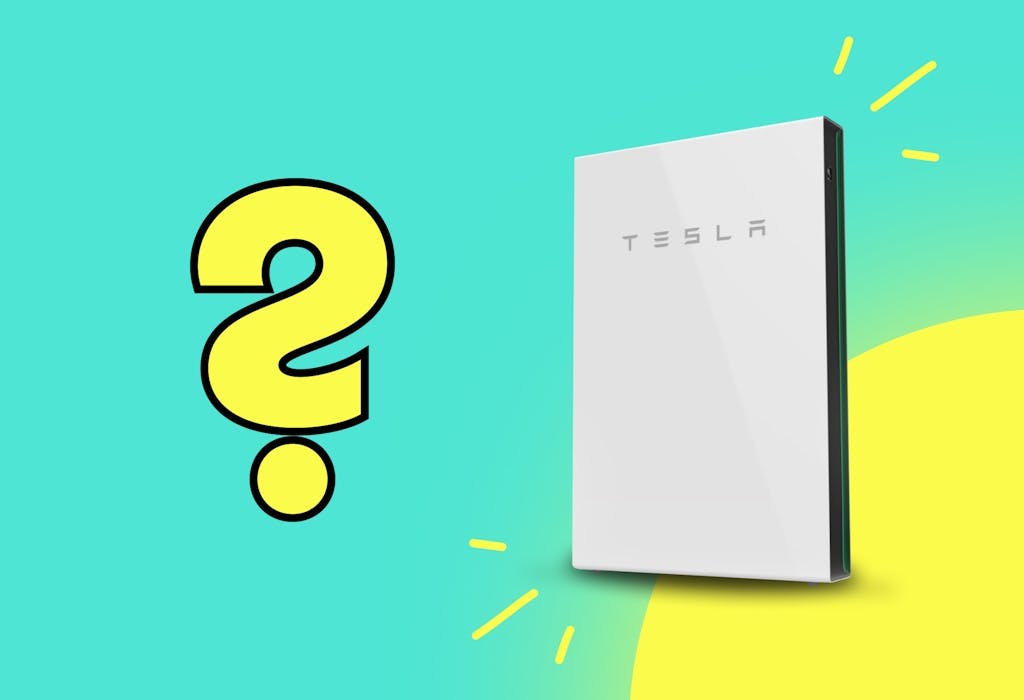
Calculate savings
What kind of home do you live in?
Calculate savings
What kind of home do you live in?
Tesla Powerwall: at a glance
When you’re buying a storage battery, you want an efficient, reasonably priced machine that suits your solar panel system and your home’s electricity consumption.
The Tesla Powerwall 3 ticks all these boxes, though only if your property, solar panel system, and electricity usage are substantially larger than average.
In this guide, we’ll explain the Powerwall 3’s key features, the ways in which it differs from previous models, and how its added features stack up against its hefty price tag.
At Sunsave, given the unsuitability of the Powerwall to most UK homes, we use other top-of-the-range battery models for a more affordable price.
If you’re wondering how much you could save with a solar & battery system, enter a few details below and we’ll provide an estimate.
Find out how much you can save
What kind of home do you live in?
What is the Tesla Powerwall?
The Tesla Powerwall is a domestic storage battery that can be installed on a floor or wall.
Like other solar batteries, it allows you to retain some of the excess electricity generated by your solar panels during the day, so you can power your household after the sun goes down.
The third model of this battery was launched in the UK in June 2024, which followed the Powerwall 2 coming out here in 2017, and the first Powerwall 1 in the UK being installed in 2016.
It was a long wait for the Powerwall 3, but it’s finally on the market – and it comes with a host of new features.
What’s different about the Tesla Powerwall 3?
The Tesla Powerwall 3 is a DC-coupled all-in-one system, meaning it contains a solar inverter and can charge using the direct current (DC) electricity that flows straight from your solar panels.
It also comes with the ability to store more power and distribute it faster, to ensure households with high electricity consumption levels are never left wanting.
And its new cathode material means its battery chemistry is better in multiple ways.
Let’s run through all those differences.
All-in-one system
Inside the Powerwall 3 is a solar inverter, making it an all-in-one system (also known as a hybrid system).
This is a major upgrade on the Powerwall 2, which requires a separate inverter.
These systems are becoming increasingly common, with leading battery companies like GivEnergy and Enphase jumping on the trend along with Sunsynk and Powervault.
DC-coupled
Tesla’s newest battery is primarily DC-coupled, meaning it can charge directly from your solar panels, then convert this DC electricity into AC electricity when it needs to go to your home or the grid.
The Powerwall 2 is AC-coupled, which requires your system to perform two conversions – one when the solar-generated electricity travels from your panels through your inverter, and one when it’s converted back into DC to charge your battery.
As your system will only have to perform one conversion with the Powerwall 3, there’ll be less energy lost in the process of getting solar-generated electricity from your panels to where it needs to go – whether that’s your home, your battery, or the grid.
As a result, this battery is significantly more efficient than its predecessor.
More power
The new battery comes with an 11.04kW continuous power rating, which is 121% higher than the Powerwall 2’s 5kW rating.
That means the Powerwall 3 can provide 11.04kW of power at once. This is different to kWh, which refers to power used over an hour – so if the Powerwall 3 supplied 11.04kW for 30 minutes, it’d provide 5.52kWh.
This level of power is unnecessary for the majority of UK solar homes, particularly during the day when their panels are producing electricity.
The average household uses 9.3kWh of electricity per day on average, according to government data , which makes a one-off usage of 11.04kW unlikely.
It does however ensure that homes with additions like an electric car charger and a heat pump can run more appliances on battery power at the same time.
The Powerwall 3 can also handle any solar panel system size up to 20kWp, which is beyond the largest systems that homes generally have. The average UK domestic system in March 2025 was 4.6kWp, according to the Microgeneration Certification Scheme (MCS).
If you get a total of four Powerwall 3 models and four expansion units, you can scale up your solar panel system to 80kWp and your battery storage system will be able to handle it.
However, this kind of storage capacity would support an annual electricity consumption of around 80,000kWh, making it more suitable for a large business – or a palace.
This is an impressive level of power, but it comes at a price. For most UK households, getting a Powerwall 3 will just mean paying extra for something you almost certainly don't need.
Better battery chemistry
The Powerwall 3 contains cathode material made of lithium iron phosphate (LFP), replacing the Powerwall 2’s nickel, manganese, and cobalt (NMC) cathode.
This shift reflects an industry-wide move towards LFP batteries, which are safer than NMC cells, have a longer lifespan, and are more thermally stable – meaning they’re less likely to catch fire.
LFP technology has come on leaps and bounds in recent years to become the best cathode material on the market. It’s also part of why this battery is a little heavier than its forerunner, but that’s a small drawback.
It also enables battery manufacturers to rely less on cobalt mining in the Democratic Republic of the Congo (DRC), which is inflicting illegal child labour , dangerous working conditions, and toxic pollution on local populations.

Key features of the Tesla Powerwall 3
The most important aspects of the Tesla Powerwall 3 range from basic attributes like its storage capacity and discharge speed to less common features like emergency power supply and expansion packs.
We’ll explain the benefits of all of these, and explore whether they’re worth having in your home.
1. Emergency power supply
Most solar & battery systems automatically disconnect from the grid in blackouts, but some – including the Powerwall 3 – have an emergency power supply (EPS) function.
This allows it to run some or all of your electrical devices during a power cut.
However, it’ll only work if an electrician activates this feature and fits the hardware needed, which includes a Tesla Backup Gateway 2, and could involve sockets, wiring, and an extra fuse box, depending on which circuits you want to include.
Tesla has created a cheaper alternative called the Backup Switch – but that’s only available in the US.
Activating EPS can end up costing you thousands of pounds, and considering the average UK home only has to deal with two power cuts every five years, it isn’t a price worth paying for most households.
You’ll also need to constantly retain some electricity in your battery, meaning you can’t utilise your full battery on a daily basis – which will massively reduce your savings.
Unless power cuts are a regular, damaging part of your life, or you have crucial medical items like a dialysis machine that require constant power, EPS is generally an expensive, needless extra.
There’s more demand for EPS in the US, where the average home spends 5.5 hours per year without grid power – as opposed to households in the UK, which lose electricity for around 35 minutes per year, on average.
However, if you do activate the Powerwall 3’s EPS feature, you’ll see it use Storm Watch. This piece of software uses local weather data to see when a storm’s coming and charges up to full in advance, in case the extreme weather results in a power cut.
2. Storage capacity
You’ll get a storage capacity of 13.5kWh with the Powerwall 3, which is the same as the Powerwall 2.
It's certainly worth getting a larger battery. You can save more money, take full advantage of the best import and export tariffs, soften the blow of price rises, and future-proof your household.
However, a 13.5kWh battery is enormous. For most UK homes, it’s massively oversized and not worth the large upfront cost.
Your battery will allow you to increase your self-consumption – that is, the amount of your solar-generated electricity you use – by allowing you to run your home on solar at night.
A battery means you don’t have to be home all day to get the most out of your panels, and a large model enables you to use more solar and export more electricity to the grid, all of which means more savings and earnings.
However, if you get an oversized battery, you could pay too much for a machine that you never use to its full capacity.
If you’re one of the rare solar homes that produces enough electricity to fill the Powerwall 3 – or if you’re willing to use one of the best export tariffs to import cheap grid electricity at night, then export it during the day – its higher storage capacity could pay off nicely.
The Powerwall 3 has a charging speed of 5kW, meaning it takes less than three hours to charge up fully from the grid – which is shorter than all the cheapest off-peak periods.
For more information, read our guide to solar battery sizing.
3. Continuous discharge power
The Powerwall 3 provides 11.04kW of continuous discharge power, meaning it can discharge in about 1.2 hours.
The average UK household using 3,400kWh per year wouldn’t need this much power at one time frequently enough to make it a wise investment.
Paying more for a battery with this capability would therefore generally be a waste.
However, if you’re exporting electricity to the grid, being able to send more at a faster rate may allow you more time to recharge your battery with solar-generated electricity and earn extra from using it or selling it to the grid.
Speak to one of the best solar installers around to find out whether your battery should have a high continuous discharge rating.
4. Size
Despite containing inverter hardware and offering upgraded capabilities, the Powerwall 3 is actually smaller than its immediate predecessor.
It’s 4.5cm shorter and 14.6cm narrower, though it is 3.8cm deeper.
However, it’s still larger and heavier than most batteries. For example, it’s 30cm taller and 13cm wider than the GivEnergy Giv-Bat 9.5.
This is less than ideal for households that have limited space available for a battery.
Most properties don’t have many suitable places to house a sizable, hefty piece of electrical hardware, and the bigger it is, the less likely it is that you’ll have a spot that works.
The Powerwall 3 is also 20kg heavier than the Giv-Bat 9.5, meaning it can’t really be installed in lofts, which aren’t usually built to hold that much weight in one spot.
It can generally only go outside – and many homes don’t have enough external wall space.
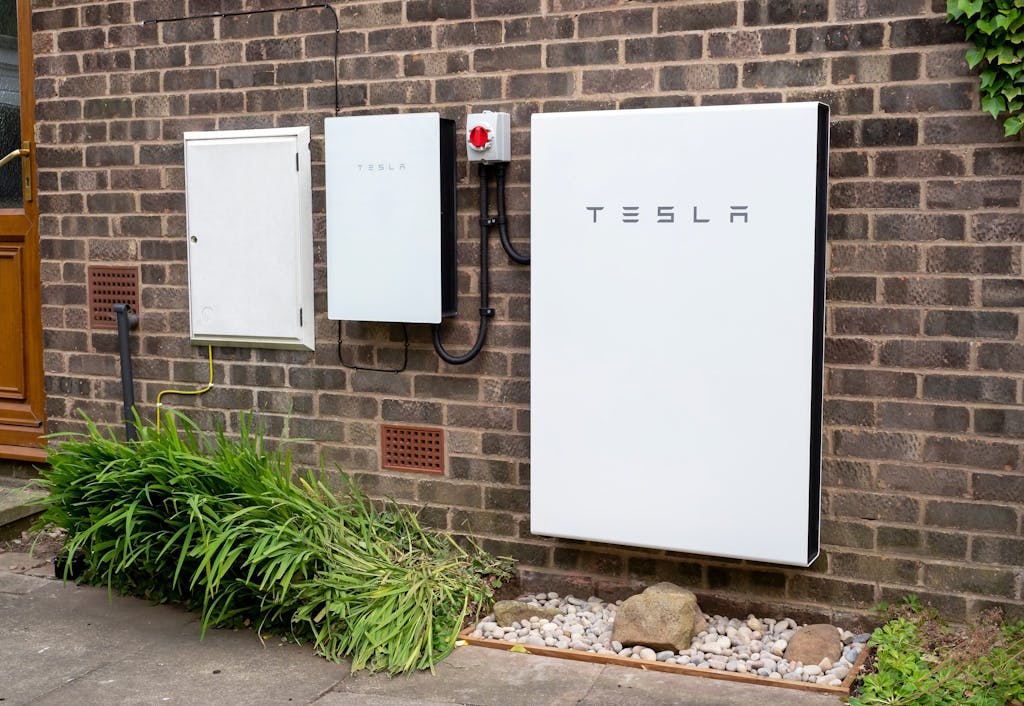
5. Expansion packs
The Powerwall 3 is modular, allowing you to grow your battery storage capacity as your electricity needs develop.
This is useful if you’d like to get a heat pump and electric vehicle, for instance, but don’t know when or if you’ll be able to afford them – or indeed if you can’t afford a larger battery system right now.
And it allows you to easily slot another module into the same system, rather than adding a whole extra battery and trying to connect the two.
You can add up to three expansion packs, though they only come in one size: 13.5kWh, like the Powerwall 3.
This is unusual, since extra modules are usually meant to provide small, affordable boosts to your capacity. FOX ESS, for instance, makes battery modules ranging from 2.9kWh to 4.7kWh.
You could theoretically own 54kWh of battery storage with a Powerwall 3 and three expansion packs, though it’s not clear why any UK household would need that much.
They’re also 110kg a piece, and the same height and width as the Powerwall 3, making it even more difficult to fit the system into any property with reasonable proportions.
Ideally, Tesla would’ve offered smaller expansion packs, or a variety of sizes, but this is another aspect that makes it seem like the company didn’t consider markets with lower consumption levels – like the UK.
6. Depth of discharge
Every solar battery will only discharge until it reaches its depth of discharge (DoD) – that is, the maximum percentage of a battery’s capacity you can use without risking damage.
Fortunately, the Powerwall 3 comes with 100% DoD, meaning you can use its full 13.5kWh capacity without causing any damage.
You can therefore make the most of having a large battery, without needing to worry about how much of its capacity is actually usable.
This sets Tesla’s model apart from many batteries on the market that come with DoD ratings of 80% or 90%, and allows Powerwall 3 owners to save more money on their energy bills.
7. Warranty
Tesla offers a 10-year warranty, with a guarantee that your Powerwall 3 will work at 80% of its initial performance throughout this period.
This comes with unlimited cycles, meaning your warranty will hold up no matter how much you use your battery over the 10 years.
Tesla does require that the Powerwall 3 be “reliably connected to the internet to secure the full 10-year warranty”, though – so make sure you fulfil that condition.
This is a top-tier warranty, though it’s not out on its own as the best. Companies including Alpha ESS and Enphase offer the same level of coverage for some of their batteries.
Some manufacturers, like EcoFlow, Enphase, and Fox ESS, provide even longer warranties too. They last 12 or even 15 years, though they naturally come with lower performance guarantees of around 60-70%.
You’ll usually want to get a solar battery after 10 to 12 years anyway, to keep getting the best out of your system – and the Sunsave Guarantee provides a free replacement battery when it’s needed.
For more information on battery lifespans, read our guide to how long solar batteries last.
8. Export tariff compatibility
The Powerwall 3 can be used with plenty of the best export tariffs, allowing you to earn hundreds of pounds per year by selling your excess electricity to the grid.
Intelligent Octopus Flux (IOF), one of the highest export rates on the market, is only compatible with a limited range of batteries – and the Powerwall 3 is among them.
Despite the high export rates offered by IOF, you may be able to earn more money with a different combination of export and import tariffs, especially since the Powerwall 3 is broadly compatible.
To find out which import and export tariffs would work best for your home, read our guide to the best SEG rates.
At Sunsave, given the unsuitability of the Powerwall to most UK homes, we use other top-of-the-range battery models for a more affordable price.
If you’re wondering how much you could save with a solar & battery system, enter a few details below and we’ll provide an estimate.
Find out how much you can save
What kind of home do you live in?
How much does the Tesla Powerwall 3 cost?
The Tesla Powerwall 3 costs around £9,000, including installation – which makes it expensive, even for a 13.5kWh battery.
Similarly sized models are generally much cheaper, and many are just as capable.
It’s only worth paying this premium for such a large, powerful machine if you have an unusually large solar panel system and use significantly more electricity than most homes.
If your solar panel system and electricity consumption level is roughly average for the UK, there are better deals out there.
How is the Tesla Powerwall 3 installed?
The Tesla Powerwall 3 can be mounted on a suitable wall or floor, like most batteries on the market.
Ideally, it should be installed in a garage that adjoins your household, or on an outside wall. It can technically be placed in a loft, but its 130kg weight makes it much more difficult to do this safely.
Physically getting the battery into your loft space would be tricky for any installer, and it’ll need to be fixed to a gable end wall that’s strong enough to hold it.
This is because batteries in general – and the Powerwall 3 in particular – shouldn’t rest on wooden joists. In the extremely rare case that a battery malfunctions and sets on fire, it can burn through and fall to the floor below.
If you don’t have a garage or adequate space outside, you may struggle to find a suitable spot, since it’s hard to find a well-ventilated place inside that has space for the Powerwall 3, and which isn’t on a potential escape route.
Can you use the Tesla Powerwall 3 off-grid?
You can’t use the Powerwall 3 as part of a fully off-grid setup, unfortunately.
As previously mentioned, you can pay an electrician to activate the machine’s EPS functionality and add the necessary sockets and fuse box, but this only comes into play during power cuts.
If you’re planning to run a totally off-grid generation system, you should look elsewhere.
Tesla didn’t design the Powerwall 3 for this purpose, and won’t provide any support if you try to take it off-grid.
Is the Tesla Powerwall 3 compatible with optimisers?
If you already have a solar panel system with optimisers or microinverters, you can add a Powerwall 3 to your setup, though it’ll be AC-coupled instead of DC-coupled.
This is slightly less efficient, since it involves more than the one conversion a DC-coupled system performs.
However, the amount of electricity you’ll lose won’t be massively significant.
Households going solar for the first time can technically also get a Powerwall 3 that’s AC-coupled with optimisers or microinverters, but it’s not recommended.
The Powerwall 3 comes with an in-built inverter and three Maximum Power Point Trackers (MPPTs), which optimise your solar panels' output to the battery – so it’s better to get it DC-coupled instead, and save yourself some money.
Is the Tesla Powerwall worth it?
The Powerwall 3 is certainly an upgrade on the Powerwall 2 – as you might expect, considering the seven-year gap between their release dates.
And if you live in a large property with an unusually big solar panel system and a very high level of electricity consumption, its 13.5kWh capacity, in-built inverter, and discharge speed make it an appealing choice.
However, for most homes, it’s not worth the higher cost.
Many batteries provide the same benefits as the Powerwall 3, and for a lower price – and there’s a multitude of drawbacks.
A large part of the justification for the Powerwall 3’s elevated price tag is its EPS functionality, which is almost always unnecessary for UK households.
It’s also difficult and expensive to scale up, with extra modules that are roughly as big as the original model – both in terms of their capacity and physical size.
And if you’re thinking of adding it to an existing system, you won’t be able to install it as a DC-coupled battery, and won’t be able to access all the associated efficiency advantages.
At Sunsave, given the unsuitability of the Powerwall to most UK homes, we use other top-of-the-range battery models for a more affordable price.
If you’re wondering how much you could save with a solar & battery system, enter a few details below and we’ll provide an estimate.
Find out how much you can save
What kind of home do you live in?
FAQs
Related articles

Written byJosh Jackman
Josh has written about the rapid rise of home solar for the past six years. His data-driven work has been featured in United Nations and World Health Organisation documents, as well as publications including The Eco Experts, Financial Times, The Independent, The Telegraph, The Times, and The Sun. Josh has also been interviewed as a renewables expert on BBC One’s Rip-Off Britain, ITV1’s Tonight show, and BBC Radio 4 and 5.
